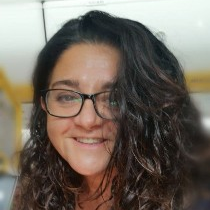Metal-Ceramic and Metal-Metal Interactions and Joining
A special issue of Metals (ISSN 2075-4701). This special issue belongs to the section "Welding and Joining".
Deadline for manuscript submissions: closed (31 December 2021) | Viewed by 11878
Special Issue Editors
Interests: metals and alloys; metal–metal and metal–ceramic interactions; advanced materials and composites
Special Issues, Collections and Topics in MDPI journals
Special Issue Information
Dear Colleagues,
Studies on the relevant liquid–solid interactions in metal–metal and metal–ceramic systems are crucial steps in the design and optimization of industrial liquid-assisted processes at high temperatures, such as the production of reliable metal–ceramic joints or high-performing composite materials.
In any process involving metallic melts, the long-term reliability of the products is strictly related to the developed microstructures, which is in turn determined by the characteristics of the dissimilar phases involved in terms of thermophysical properties, interfacial characteristics, reactivity, and process parameters selected.
This Special Issue aims to stimulate researchers worldwide to share their systematic studies, addressing both basic (wettability, interfacial tension, and phase equilibria determination) and application (e.g., joining by brazing) aspects. Particular consideration will be made to studies aimed at elucidating the role that dissolution, chemical reactions, and additions of active metal elements to the molten matrix have in wetting processes and on solid–liquid adhesion in relation to the desired final properties.
For this purpose, original research articles, review articles, and significant preliminary communications are invited, with particular interest in articles describing current research trends and future perspectives in the manufacture of tailored advanced materials for highly demanding applications.
Potential topics include, but are not limited to, the following:
-Surfaces and interfaces at high temperatures;
-Wetting at high temperatures;
-Grain boundaries at high temperatures;
-Liquid-metal penetration;
-Thermodynamic studies;
-Microstructural analyses;
-Soldering, brazing, and joining processes;
-Liquid and solid-state reactivity;
-Liquid/solid interfaces in metallurgical processes (e.g., casting).
Prof. Dr. Donatella Giuranno
Prof. Dr. Fabrizio Valenza
Guest Editors
Manuscript Submission Information
Manuscripts should be submitted online at www.mdpi.com by registering and logging in to this website. Once you are registered, click here to go to the submission form. Manuscripts can be submitted until the deadline. All submissions that pass pre-check are peer-reviewed. Accepted papers will be published continuously in the journal (as soon as accepted) and will be listed together on the special issue website. Research articles, review articles as well as short communications are invited. For planned papers, a title and short abstract (about 250 words) can be sent to the Editorial Office for assessment.
Submitted manuscripts should not have been published previously, nor be under consideration for publication elsewhere (except conference proceedings papers). All manuscripts are thoroughly refereed through a single-blind peer-review process. A guide for authors and other relevant information for submission of manuscripts is available on the Instructions for Authors page. Metals is an international peer-reviewed open access monthly journal published by MDPI.
Please visit the Instructions for Authors page before submitting a manuscript. The Article Processing Charge (APC) for publication in this open access journal is 2600 CHF (Swiss Francs). Submitted papers should be well formatted and use good English. Authors may use MDPI's English editing service prior to publication or during author revisions.
Keywords
- Metal–metal and metal–ceramic interfaces
- Intermetallics
- Phase diagrams
- Modeling
- Diffusion
- Wetting by liquid metals
- Brazing
Benefits of Publishing in a Special Issue
- Ease of navigation: Grouping papers by topic helps scholars navigate broad scope journals more efficiently.
- Greater discoverability: Special Issues support the reach and impact of scientific research. Articles in Special Issues are more discoverable and cited more frequently.
- Expansion of research network: Special Issues facilitate connections among authors, fostering scientific collaborations.
- External promotion: Articles in Special Issues are often promoted through the journal's social media, increasing their visibility.
- Reprint: MDPI Books provides the opportunity to republish successful Special Issues in book format, both online and in print.
Further information on MDPI's Special Issue policies can be found here.






